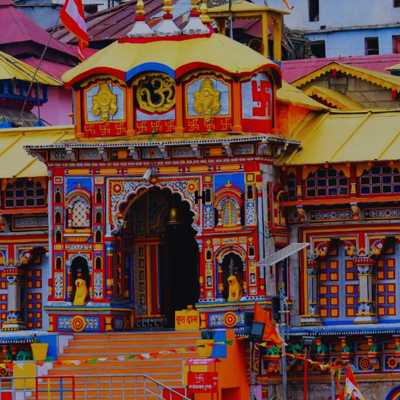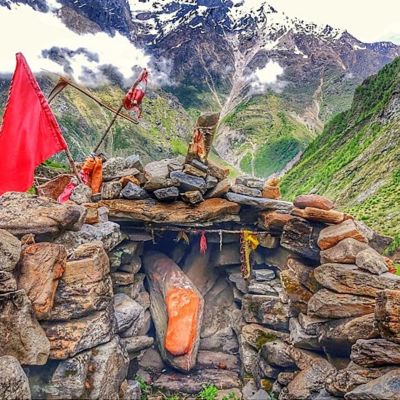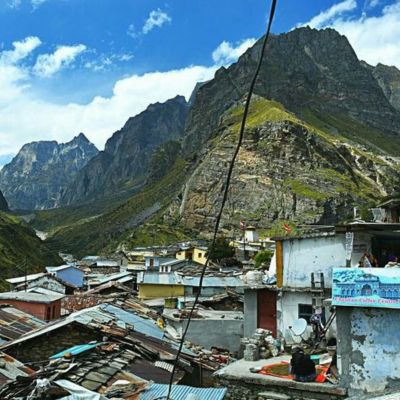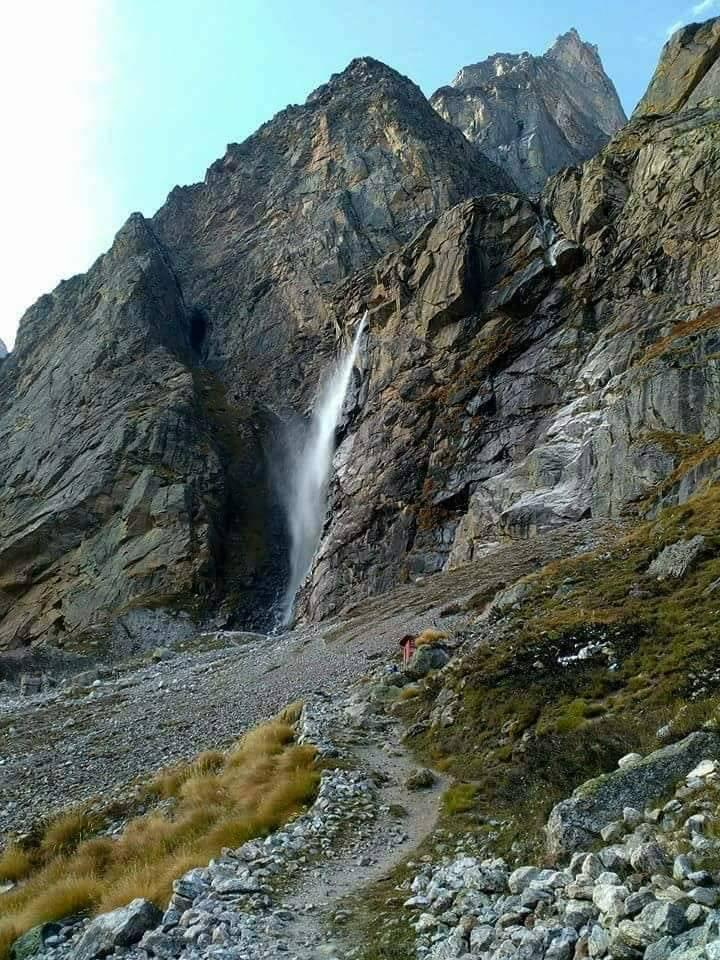Badrinath: A Divine Abode in Uttarakhand
Badrinath, a sacred town in the Chamoli district of Uttarakhand, is one of India’s most revered pilgrimage destinations. Nestled in the Garhwal Himalayas at an altitude of 3,300 meters (10,827 feet), it is renowned for the Badrinath Temple, dedicated to Lord Vishnu. Badrinath is also part of the Char Dham Yatra, a significant Hindu pilgrimage circuit. Surrounded by snow-clad peaks, serene landscapes, and the Alaknanda River, this divine destination offers a blend of spirituality, mythology, and natural beauty.
Geographical Overview
Badrinath is located at an elevation of approximately 3,300 meters (10,827 feet) above sea level in the Chamoli district of Uttarakhand. It lies on the banks of the Alaknanda River, one of the primary tributaries of the sacred Ganges. The town is set against the majestic backdrop of the Nar and Narayan mountain ranges, with the towering Neelkanth Peak adding to its ethereal beauty.
Historical and Mythological Significance
Badrinath holds immense historical and mythological importance in Hinduism. According to legend, Lord Vishnu meditated here under a badri tree (a type of jujube), earning the site its name. It is believed that Adi Shankaracharya, the 8th-century philosopher-saint, re-established the temple as a spiritual hub to revive Hindu dharma.
Mythological references also link Badrinath to the Mahabharata. It is said that the Pandavas passed through this region on their way to heaven. The town is also associated with Nar and Narayan, twin forms of Lord Vishnu, who performed penance in this sacred location.
The Badrinath Temple
The Badrinath Temple is the centerpiece of the town and one of the 108 Divya Desams (holy abodes of Lord Vishnu). This ancient temple’s architecture is characterized by a colorful façade, a tall conical roof, and intricate carvings.
-
Main Idol: The temple houses a one-meter-tall black stone idol of Lord Vishnu in a meditative pose. This idol is said to have been discovered by Adi Shankaracharya in the Alaknanda River.
-
Other Deities: The temple also features shrines dedicated to Goddess Lakshmi, Nar and Narayan, and other gods.
-
Opning and Closing: The temple opens in May and closes in November for the winter season due to heavy snowfall.
Architectural Highlights
The temple is built in the traditional North Indian style, featuring a towering conical roof and a sanctum sanctorum housing the black stone idol of Lord Badri Vishal. This 1-meter-tall idol is considered one of the eight swayam vyakta kshetras (self-manifested statues) of Lord Vishnu.

Badrinath

Charan Paduka

Mana Village

Vasudhara Falls
Major Attractions
-
Badrinath: The ancient Badrinath Temple, built in traditional North Indian architectural style, is the spiritual heart of the town. Surrounded by the serene Alaknanda River, majestic peaks, and lush valleys, the site is a perfect blend of natural beauty and religious significance. Pilgrims from across the globe visit to seek divine blessings, witness the mesmerizing Ganga Aarti, and explore nearby treasures like Mana Village and Tapt Kund.
-
Charan Paduka: A sacred rock located 3 kilometers from Badrinath, Charan Paduka bears imprints believed to be of Lord Vishnu’s feet. The site offers panoramic views of the surrounding valleys.
-
Mana Village: Located just 3 kilometers from Badrinath, Mana is India’s last village near the Indo-Tibetan border. This charming village is home to the Bhotiya tribe and offers attractions like the Vyas Gufa, where sage Ved Vyasa is believed to have written the Mahabharata, and Bheem Pul, a natural rock bridge associated with the Pandavas.
-
Vasudhara Falls: This stunning waterfall, located 9 kilometers from Badrinath, cascades from a height of 400 feet. Surrounded by rugged terrain, it is a favorite trekking destination for nature enthusiasts.
Adventure and Trekking Opportunities
While Badrinath is primarily a spiritual destination, it also offers opportunities for adventure enthusiasts. The town serves as a base for several treks and expeditions into the Himalayas. Popular trekking routes include.
-
Satopanth Trek: A challenging trail leading to the Satopanth Lake, a glacial lake surrounded by mythological significance.
-
Valley of Flowers Trek: Accessible from Govindghat (near Badrinath), this trek takes you to the UNESCO World Heritage Site, known for its vibrant alpine flowers..
-
Hemkund Sahib Trek: This trek leads to a revered Sikh pilgrimage site and the glacial Hemkund Lake.
How to Reach Badrinath
Reaching Badrinath involves a journey through winding mountain roads and picturesque landscapes.
-
Air By: The nearest airport is Jolly Grant Airport in Dehradun, located about 315 kilometers away. From there, one can hire a taxi or board a bus.
-
By Train: The closest railway station is Rishikesh, around 295 kilometers from Badrinath.
-
By Road: Badrinath is well-connected by motorable roads. Regular buses and taxis operate from Haridwar, Rishikesh, and Dehradun.
Best Time to Visit
The best time to visit Badrinath is between May and November, as the temple remains closed during the winter months due to heavy snowfall. The peak season is from May to June and September to October when the weather is pleasant, and the roads are clear.
Accommodation and Facilities
Badrinath offers a range of accommodations, from budget lodges to more comfortable guesthouses. The GMVN Tourist Rest House and various dharamshalas provide affordable options for pilgrims. Dining options in the town are simple, with vegetarian food being the norm.
Some Important Links, You Might Want To Visit.
-
First thing first, you need to learn How to register for Char Dham Yatra
-
Discover all about the Himalayan Char Dham Yatra.
-
All you need to know about Uttarakhand.
-
Follow this useful article for Packing Tips For Uttarakhand.
-
Learn more about the Things to Do and Don't do during Char Dham Yatra
Have something to ask? Call for an instant question or begin a Chat on WhatsApp.
If planning for an Uttarakhand Tour Package, please fill this Reservation form.